Compound A,C3H10O5,given a tetraacetate with AC2O and oxidation of A with Br2−H2O gives an acid, C5H10O6. Reduction of A with HI gives isopentane.The possible structure of A is
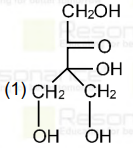

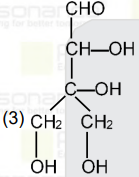

The correct Answer is:C
To solve the problem step by step, we will analyze the information given in the question and derive the possible structure for compound A (C₃H₁₀O₅).
Step 1: Analyze the Molecular Formula
The molecular formula of compound A is C₃H₁₀O₅. This indicates that it contains 3 carbon atoms, 10 hydrogen atoms, and 5 oxygen atoms.
Step 2: Identify Functional Groups
The problem states that compound A forms a tetraacetate when reacted with acetic anhydride (Ac₂O). This suggests that compound A has 4 hydroxyl (–OH) groups, as each –OH group can react with acetic anhydride to form an acetate.
Step 3: Consider the Oxidation Reaction
When compound A is oxidized with Br₂-H₂O, it produces an acid with the formula C₅H₁₀O₆. The increase in carbon atoms from 3 to 5 suggests that the oxidation reaction is likely converting some functional groups into carboxylic acid groups (–COOH).
Step 4: Analyze the Reduction Reaction
The reduction of compound A with HI yields isopentane. Isopentane has the formula C₅H₁₂, which indicates that the reduction process must involve the conversion of functional groups to hydrocarbons.
Step 5: Determine the Structure of Compound A
Given that compound A has 4 hydroxyl groups, a total of 3 carbon atoms, and considering the reactions it undergoes, we can deduce that compound A must be a polyol (a compound with multiple hydroxyl groups).
The presence of 4 hydroxyl groups suggests that compound A could be a sugar alcohol or a similar structure. The oxidation to an acid and the reduction to isopentane further suggest that compound A could be a sugar alcohol like D-mannitol or a derivative.
Step 6: Final Structure Proposal
Based on the analysis, the most likely structure for compound A (C₃H₁₀O₅) is a compound that has 4 hydroxyl groups and can be oxidized to yield a compound with a carboxylic acid group.
The possible structure of A is:
- A = D-mannitol (C₅H₁₀O₅)
Conclusion
The possible structure of compound A is one that can react to form tetraacetate, oxidize to an acid, and reduce to isopentane.
---
The molecular formula of compound A is C₃H₁₀O₅. This indicates that it contains 3 carbon atoms, 10 hydrogen atoms, and 5 oxygen atoms.
The problem states that compound A forms a tetraacetate when reacted with acetic anhydride (Ac₂O). This suggests that compound A has 4 hydroxyl (–OH) groups, as each –OH group can react with acetic anhydride to form an acetate.
When compound A is oxidized with Br₂-H₂O, it produces an acid with the formula C₅H₁₀O₆. The increase in carbon atoms from 3 to 5 suggests that the oxidation reaction is likely converting some functional groups into carboxylic acid groups (–COOH).
The reduction of compound A with HI yields isopentane. Isopentane has the formula C₅H₁₂, which indicates that the reduction process must involve the conversion of functional groups to hydrocarbons.
Given that compound A has 4 hydroxyl groups, a total of 3 carbon atoms, and considering the reactions it undergoes, we can deduce that compound A must be a polyol (a compound with multiple hydroxyl groups).
Based on the analysis, the most likely structure for compound A (C₃H₁₀O₅) is a compound that has 4 hydroxyl groups and can be oxidized to yield a compound with a carboxylic acid group.
- A = D-mannitol (C₅H₁₀O₅)
The possible structure of compound A is one that can react to form tetraacetate, oxidize to an acid, and reduce to isopentane.
Topper's Solved these Questions
Similar Questions
Compound (A) C5H10O5 give a tetra-acetate with Ac2O and oxidation of (A) with Br2−H2O gives an acid, C5H10O6 Reduction of (A) wilh HI and red phosphorous gives 2-methyl butane. What is the structure of (A)?
View SolutionCompoune (A) C5H10O5, give a tetra-acetate with Ac2O and oxidation of (A) with Br2−H2O gives an acid, C5H10O6. Reduction of (A) with HI and red phosphorous gives 3-methylbutane. What is structure of (A)?
View Solution
Knowledge Check
- Question 1 - Select One
Compound A, C3H10Os, gives a tetraacetate with (CH3,CO)2,O, and oxidation of A with Br2−H2O gives an acid, C5H10O6. Reduction of 'A' with HI gives iso-pentane. There are two possible structures for compound 'A' which can be distinguished by using
AHIO4Bexcess of P,HICphenylhdrazineDTollens' reagent - Question 2 - Select One
C7H10O reacts with CH3MgBr r to give a compound C8H10O which gives the test with iodoform, than fine out structure of A
A B
B C
C D
D
- Question 3 - Select One or More
Compound (A) C8H6O2 on treatment with aq. NaOH followed by acidification gives (B) C8H8O3 which on oxidation gives benzoice acid only :
A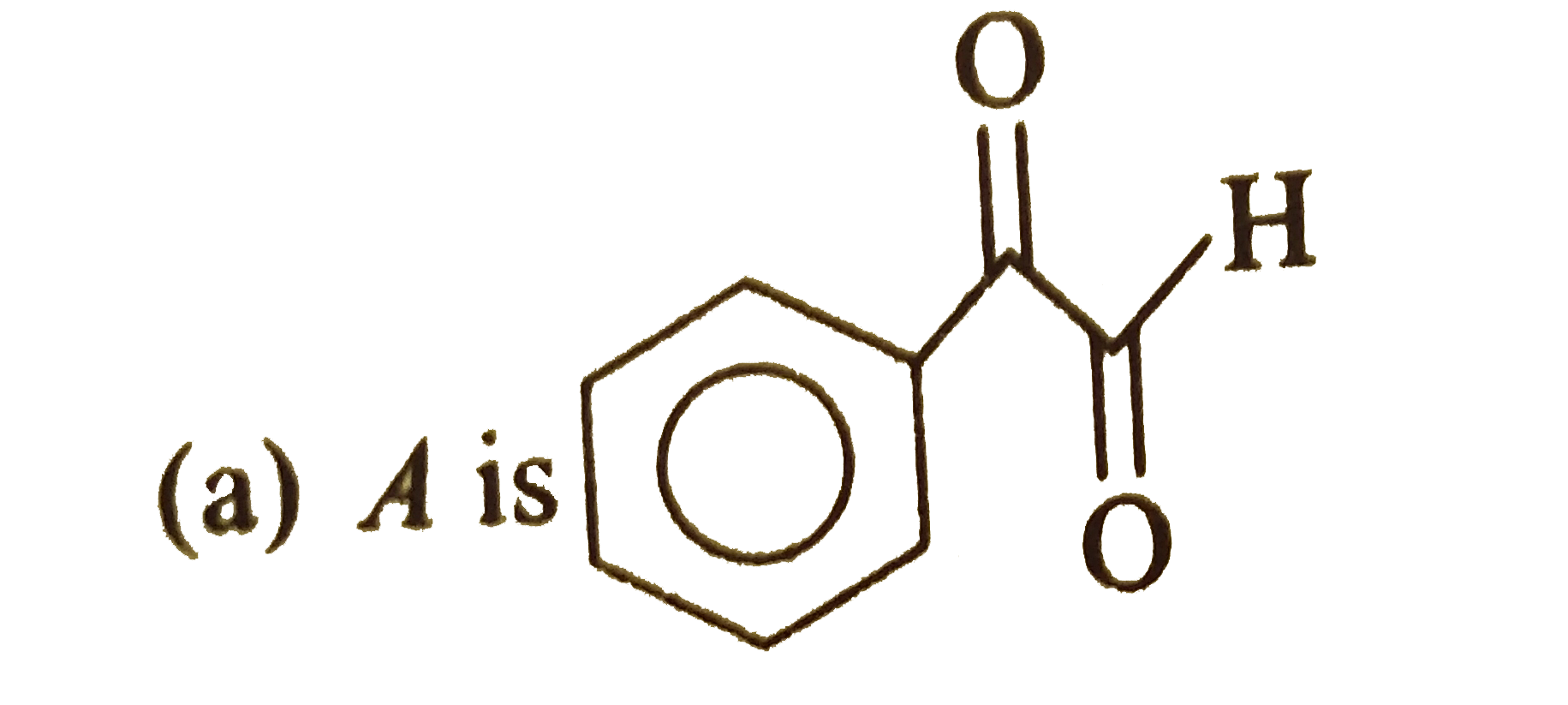 B
B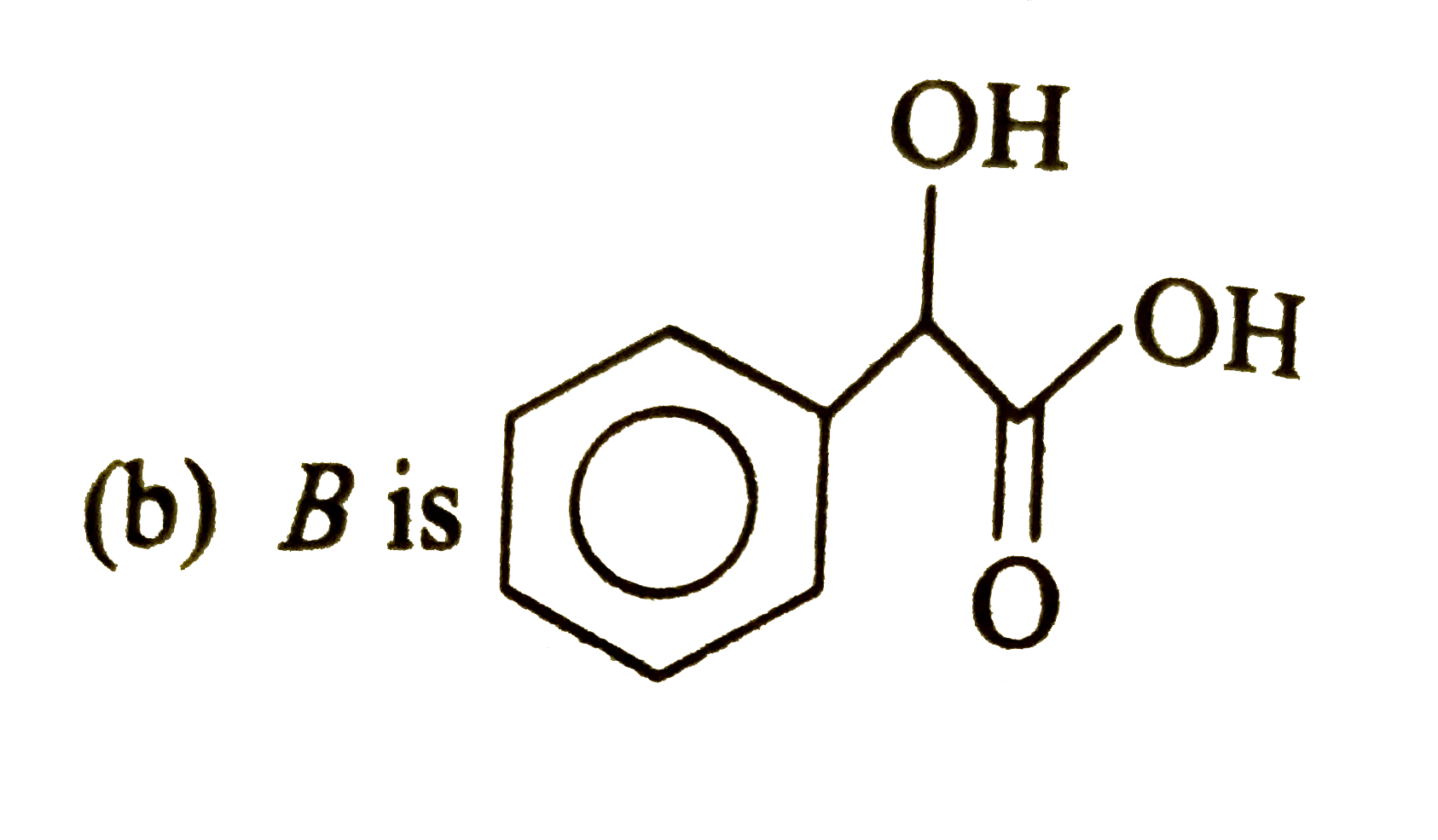 C
C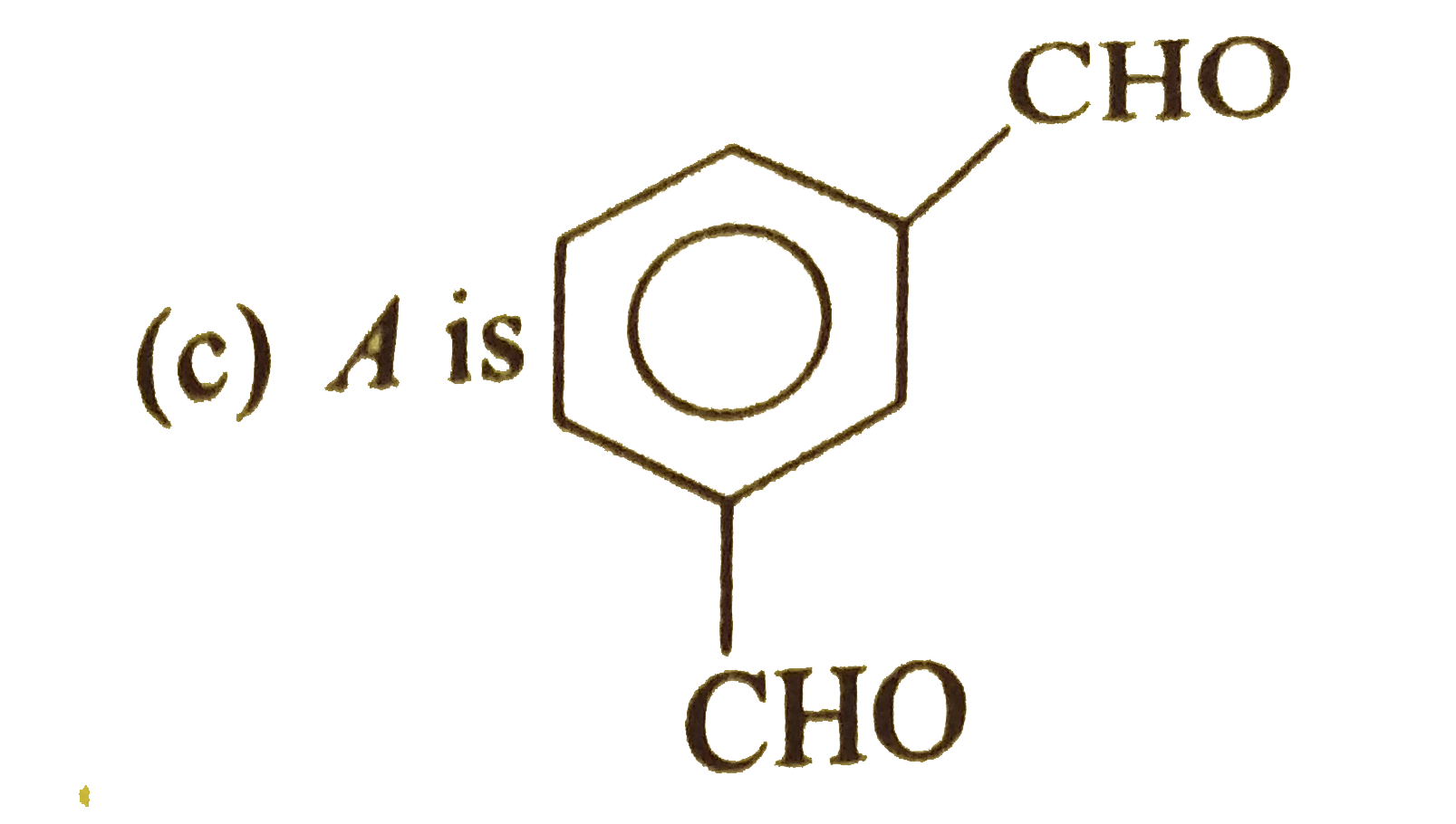 D
D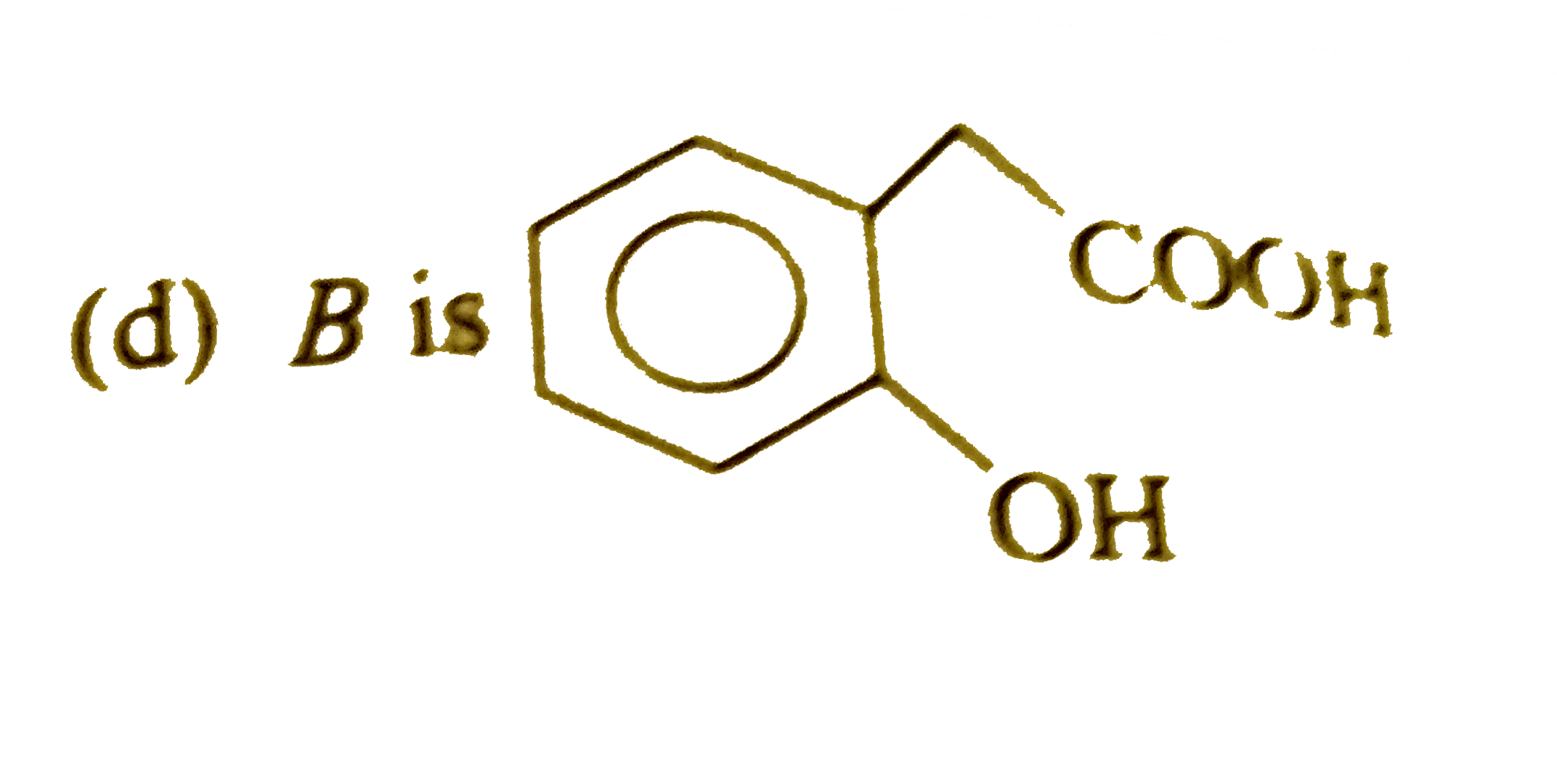
An organic compound A (C4H10O) reacts with HI giving a compound B (C4H9I) which on reduction gives n-butane. Oxidation of compound A gives C (C4H8O) and then an acid D (C4H8O2) . Deduce the structure of A,B,C and D.
View SolutionAn organic compound (A) (C8H14O) forms an oxime and gives a positive haloform reaction. On ozonolysis, it gives acetone and a compound (B) (C5H8O2) . (B) forms a dioxime and on subjecting to oxidation reaction gives an acid (C ) (C4H6O4). On treatment with excess of ammonia and strong heating, (C ) gives a neutral compound (D) (C4H5O2N). (D) on distillation with zinc dust forms pyrrloe. Suggest the possible structures of (A), (B), (C ), and (D). Explain the chemical reactions involved.
View SolutionAn organic compound (A) of molecular formula C5H8 when treated with Na in liquid ammonia followed by reaction with s-Propyl iodide yeidls (B) C8H12 (A) gives a ketone C5H10O (e) when treated with dil H2SO4 and HgSO4 (B) on oxidation with alkaline KMnO4 gives two isomeric acids (D) and (E) C4H8O2. Give structures of compounds (A) to (E) with proper reasoning .
View SolutionCompound AC5H10O4, is oxidized by Br2−H2O to the acid, C5H10O5. (A) Forms a triacetate (Ac2O) and is reduced by HI to n-pentane. Oxidation of (A) with HIO4 gives, among other product, 1 molecule of CH2O and 1 molecule of HCO2H. What are the possible structures or (A) and how could you distinguish between them?
View SolutionAn organic compound A(C6H10) on reduction first gives B(C6H12) and finally C(C6H14). Compound A on ozonolysis followed by hydrolysis gives two aldehydes D(C2H4O) and E(C2H2O2). Oxidation of B with acidified KMnO4 gives the acid F(C4H8O2). determine the structures of the compounds A to F with reasoning.
View Solution

